My office has two windows, but they are high up on the wall and don’t allow for direct sunlight. Which, if you’re working on the computer, is a good thing, but if you want to have plants indoors, it can limit your choices.
After a few trials (and errors), here are some of the plants I recommend for low light conditions (and low maintenance) in your office.

Pothos
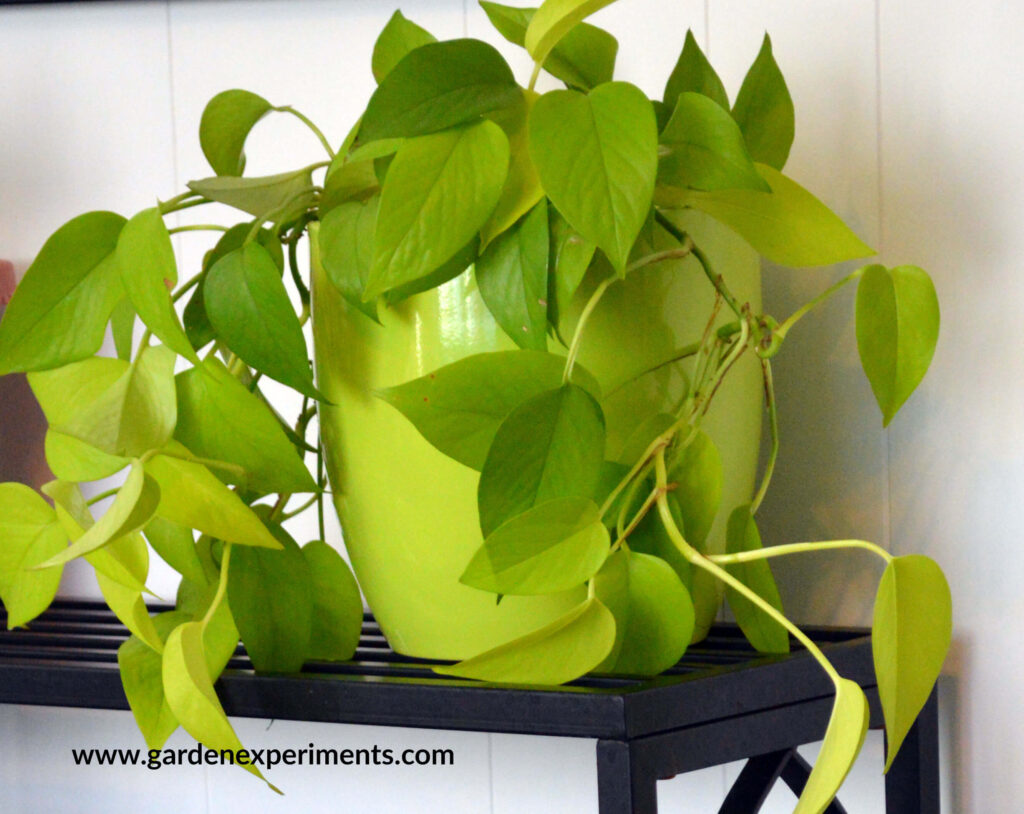
This has to be one of the easiest plants to grow. You can grow it from a cutting by clipping a piece of the plant that has a couple of leaf nodes on it and placing the cut end into the soil (buried up to the first leaf node – be sure to remove that leaf). It will put out roots quickly. You can also root it directly in water and then put it in the soil.
Pothos can handle low light conditions and comes in a variety of leaf colors – from solid green, to pale lime green, to variegated and all of those in-between. It doesn’t require a lot of water and will do just fine even if you neglect it for a while. It is a vine, so it will need to be cut back every once and a while. You can start new plants with the cuttings!
A bonus benefit of Pothos is that it helps to clean the air in your office by removing carbon monoxide and formaldehyde.
Mother-in-Law’s Tongue or Snake Plant (Sansevieria)
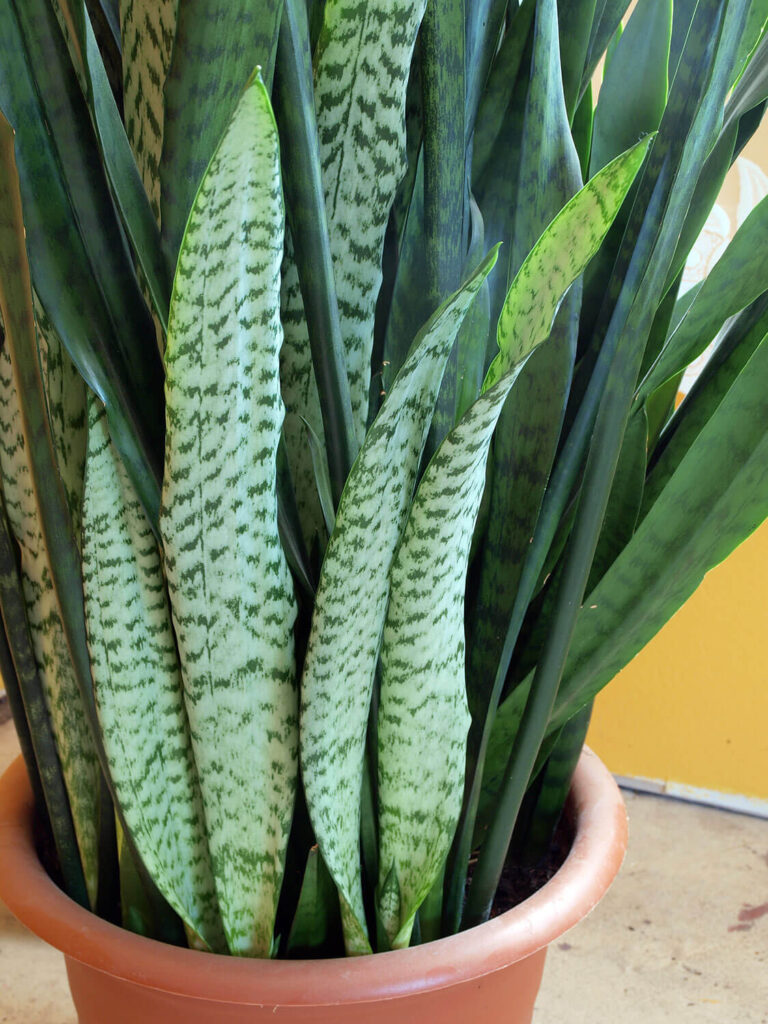
Sansevieria, otherwise known as snake plant or mother-in-law’s tongue, is a very low-maintenance plant. I generally plant it and forget it. It tolerates low-light conditions very well and does not need much water. It actually prefers to be a little dry. You should water it every couple of weeks but be careful not to keep the soil wet for long.
This plant is also easy to propagate from cuttings or dividing the plant when it produces baby plants. Individual sections of the plant can be separated and placed in separate pots to grow.
You can also grow new plants from leaf cuttings. If you want to try a leaf cutting, cut a leaf into 3 to 4-inch sections and put the bottom 1/3 of the leaf into the soil and water. In a few weeks, it will grow roots.
Sansevieria lends itself very well to modern décor. Put it in a tall, white pot or in a metal planter and it blends right into the room décor.
Nerve Plant (Fittonia)
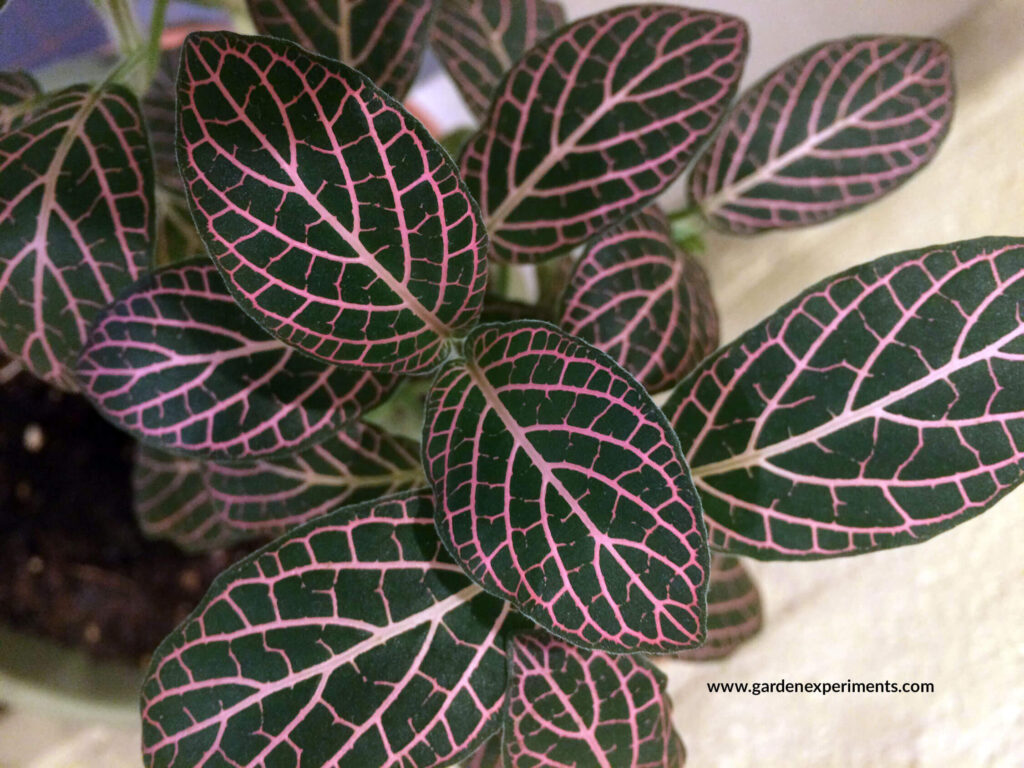
Nerve plant (Fittonia verchaffeltii) is another very low maintenance, low light loving plant. I have one in my office that I tend to only water when I notice it is wilting. It has taken this neglect for several years now and is doing well in spite of the lack of care.
If you want to keep your nerve plant from getting a bit leggy, you should pinch the stem tips often to encourage it to grow in more of a bushy shape rather than growing tall.
I love the pink veins that run through this plant. It adds some nice color and can be mixed in a pot with other plants (like ferns or something green) to make a nice mixed planter. Nerve plant can also be found with white or silver veins.
Fittonia is a tropical plant, native to Peru. If you want to give this plant a little boost, consider misting it with water.
You can propagate this plant by taking a cutting from the stem (about 2-3 inches long) and placing the stem into soil. Keep the soil moist and the cutting will grow new roots in about 2 to 3 weeks. To improve the chances of it rooting, consider putting a bag over the cutting to increase humidity (or placing it in a terrarium).
Philodendrons
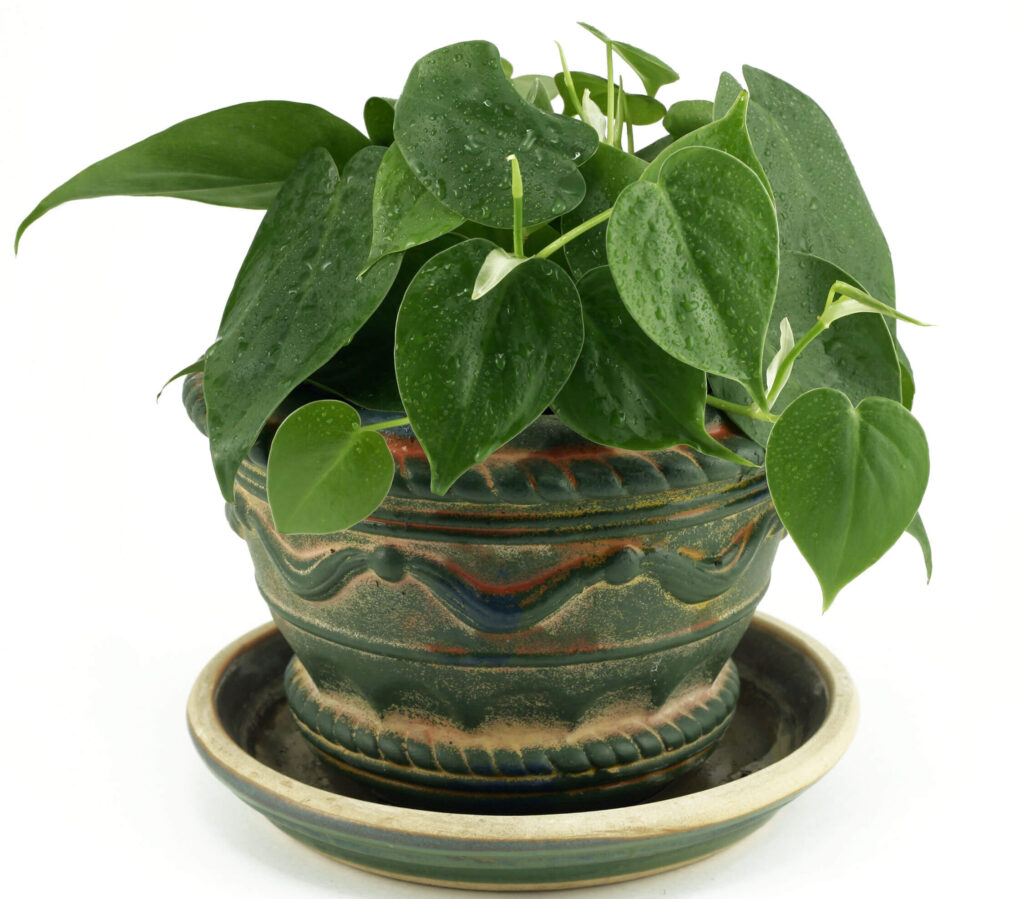
There are a lot of different species of Philodendrons, but the smaller vining variety (heart leaf philodendron) is a good size for a typical office. The larger varieties have very interesting leaves but they take up a lot more space.
While these plants prefer medium light to low light, it is still feasible to grow them in an office. They do not like direct light, so put it close to a window but make sure that the sun never directly hits the leaves.
If you notice that the leaves are getting smaller and are spaced wider apart as the plant grows, it needs more light. If the leaves are turning yellow or brown, it could be that the leaves are getting burned by direct sunlight.
Philodendrons do not require lots of water, but you should keep the soil evenly moist and allow it to dry out between waterings. Again, I’ve watered as little as once every couple of weeks and the plant manages just fine. If the leaves start to turn brown and fall off, you might want to increase your watering schedule.
As the plant grows, you will want to trim it back some to keep it contained (and a bit healthier). You can take the cuttings (with a couple of leaf nodes on them) and root them in water or place them in a bit of soil (with the bottom 1-2 inches in the soil) and keep them evenly moist to root in 2-3 weeks.
Orchids
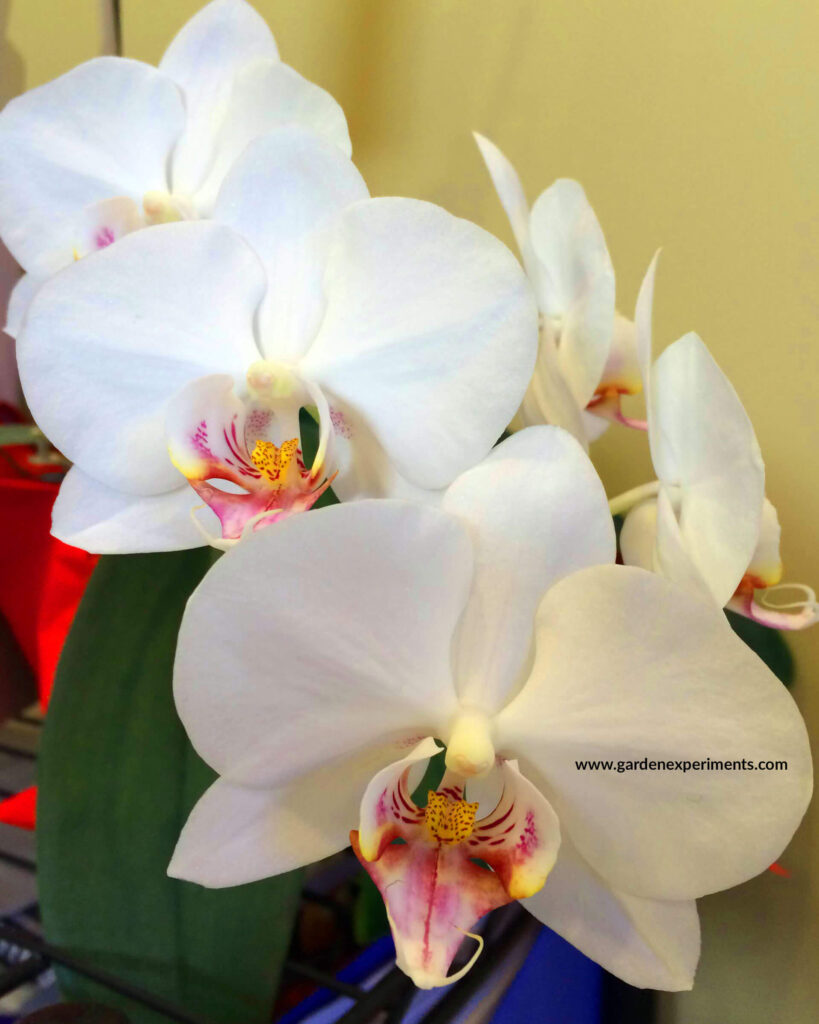
Ok, I know this plant can strike fear into some, as they think it can be difficult to grow. However, I had an orchid in my office this past year that I frequently neglected, and it bloomed!
I think that we tend to pay too much attention to orchids and that is why they start to look bad. We overwater an orchid or put it too close to direct sunlight. Mine always seem to bloom at times when I have stopped paying them much attention.
Phalaenopsis orchids like low light conditions, making them a good choice for an office plant. Water your Phalaenopsis about once every 7 to 14 days. Reduce watering in the winter months and increase it in the summer months.
Here is the one I had in my office that surprised me with a bloom this past year.
Fertilizing Office Plants
Indoor plants will need to be fed. They don’t get the nutrients that come from decomposing litter or the rain like most plants do. I recommend you follow the instructions on the plants that you select for your office when it comes to fertilization.

